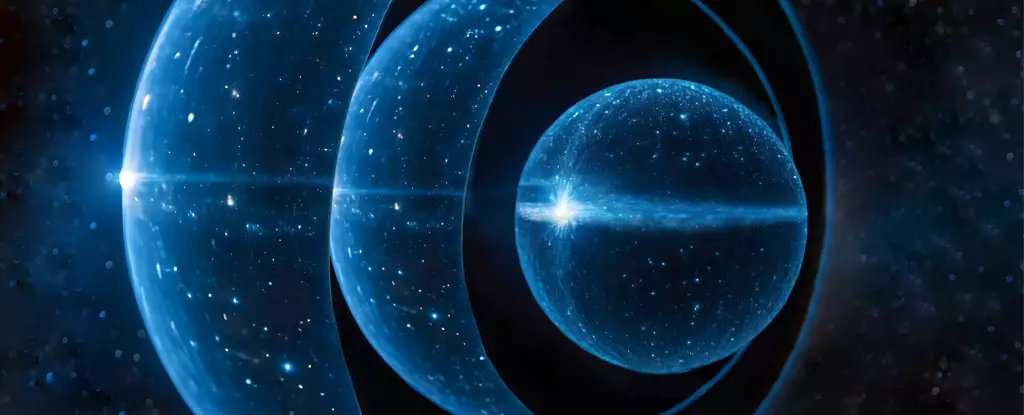Black holes have long been known as fascinating celestial objects that challenge our understanding of the universe. Initially conceived as hypothetical monsters in the realm of Einstein’s general theory of relativity, these mysterious entities are now considered as real as stars, moons, and galaxies. The complexities of black holes have puzzled scientists for decades, leading to various interpretations and models to better grasp their enigmatic nature.
Physicists Daniel Jampolski and Luciano Rezzolla from Goethe University Frankfurt have embarked on a journey to revisit the fundamental equations that describe black holes. In their quest for a clearer picture, they have proposed a unique concept of a gravitationally-confined ‘bubble’ of material. This novel approach offers a fresh perspective on the nature of black holes, suggesting the existence of nested bubbles within these cosmic entities.
One of the intriguing aspects of black holes is their ability to conceal a dirty secret of physics. According to the Schwarzschild radius, when mass is compressed beyond a certain point, gravity overcomes all other forces, leading to a significantly reduced space. However, the mysteries deepen as we delve into the realm of quantum physics, where the fate of matter in the extreme conditions of a black hole remains uncertain. The interplay between gravity and quantum mechanics poses a major challenge in understanding the nature of black holes.
In an attempt to address the information paradox and avoid the complexities of infinite density within black holes, physicist Pawel Mazur and astrophysicist Emil Mottola introduced the concept of a gravitational condensate star, known as a gravastar. This theoretical construct envisions a thin film of matter inflated by dark energy, resembling a black hole from the outside while offering a potential solution to the paradoxical nature of these cosmic entities.
Jampolski and Rezzolla expanded upon this idea by proposing the existence of nested gravatars, forming a structure they refer to as a nestar. This matryoshka doll-like configuration presents a novel perspective on the internal composition of black holes, offering insights into the potential complexities that may exist within these enigmatic objects.
While the creation of a gravastar or a nestar remains a theoretical challenge, the exploration of these mathematical solutions sheds light on the intricate properties of black holes. By pushing the boundaries of existing theories, scientists aim to deepen their understanding of these cosmic enigmas and potentially unravel the most vexing conundrums associated with black holes.
The ongoing quest to unlock the mysteries of black holes continues to inspire new avenues of exploration and innovation in the field of astrophysics. Through theoretical advancements and mathematical modeling, researchers strive to shed light on the enigmatic nature of these cosmic entities, leading to a deeper appreciation of the universe’s most intriguing phenomena.


Leave a Reply